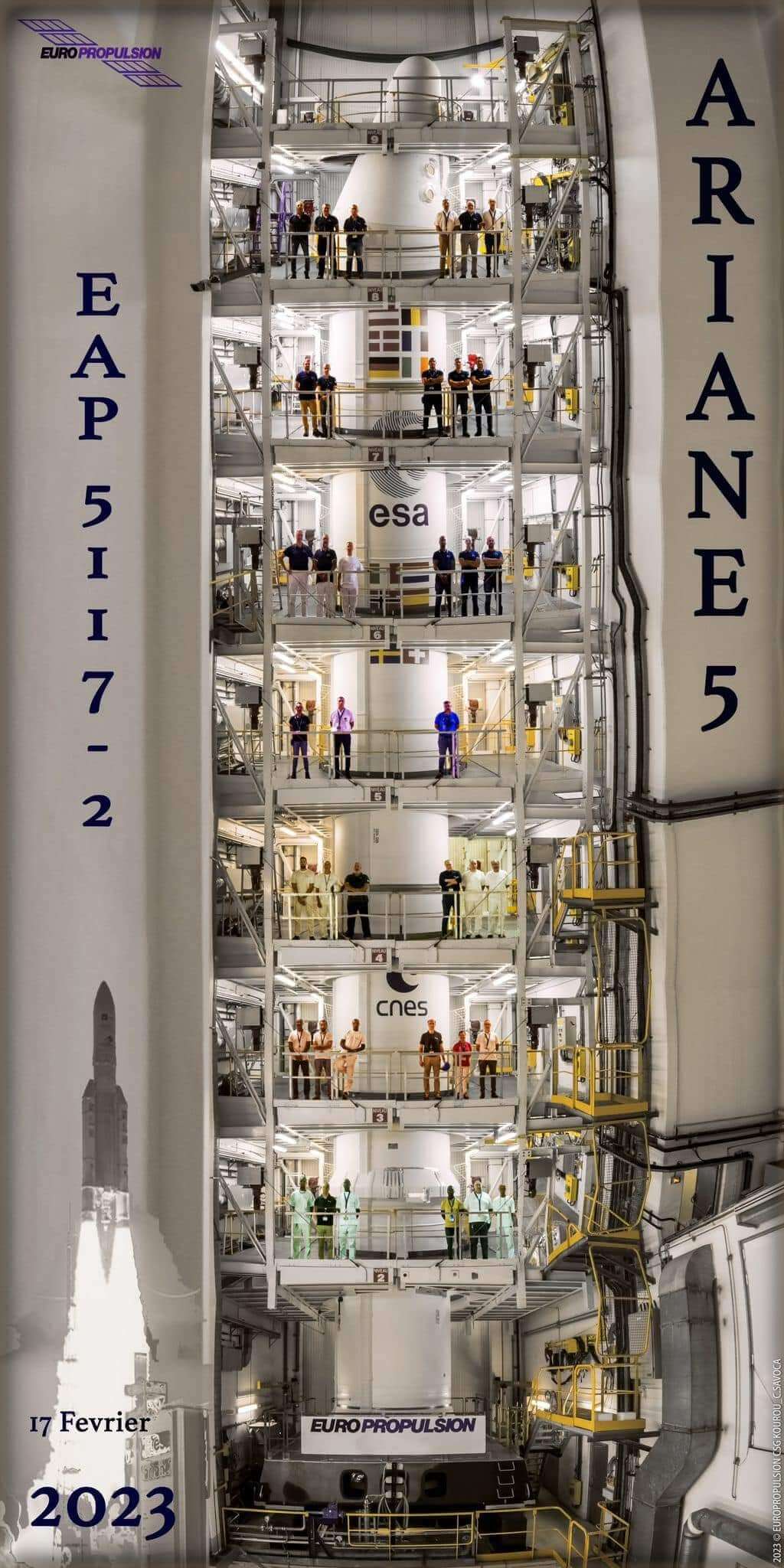Every weekend, a picture that made the news or caught our attention. As the Ariane 5 launcher prepares to retire, its last "EAPs" have just been produced in French Guiana.
The end of an era
The last of the solid rocket booster stages (EAP or P230) for the Ariane 5 launcher, produced at the Guyana Space Center by Europropulsion (a joint venture of ArianeGroup and Avio), is ready.
It will equip the final mission of the European launcher (VA261) in June this year.
This will carry two geostationary telecommunications satellites, Heinrich Hertz (H2Sat), from the German Aerospace Center (DLR), and Syracuse 4B, from the DGA.
Safety first
The image shown here, made on Feb. 27 is a montage of different shots, as access around a booster loaded with 237.7 tons of solid propellant is limited to eight people, for safety reasons.
Each EAP engine (called MPS, for Solid Propulsion Engine) is divided into three segments of PBHT (hydroxytelechelic polybutadiene), manufactured in the Guyanese Regulus plant.
An EAP measures 31 meters high by 3 meters in diameter, and represents a total mass of 267 tons.
The two EAPs that encircle Ariane 5's EPC cryogenic main stage develop a liftoff thrust of 6 MN (ISp = 273 sec).
They operate for 123 seconds, before being jettisoned at 56 km altitude, and deliver 92 % of the launcher's total thrust at liftoff (average thrust : 5 060 kN, maximum thrust: 7 080 kN).
Découvrez cet article sur Air&Cosmos

